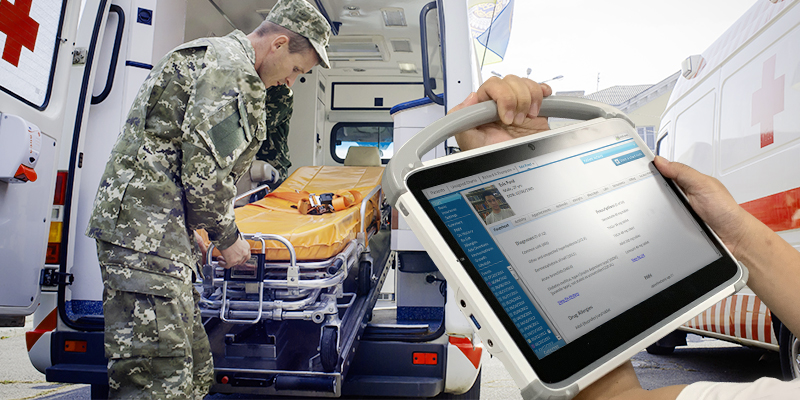
One of the most popular ways to safely access our accounts or gadgets has been through passwords. However, as new technologies have developed, it has become increasingly common for other biometric techniques to take their place. The fingerprint reader is without a doubt the most popular and in-demand of these technologies.
A fingerprint reader (or scanner) is a biometric security device used to protect against unauthorized access to a device. This is done by comparing a scan of an individual’s unique fingerprint ridges with stored digital images of verified users. Access is granted if the fingerprint is a match to one of those valid images. This technology can be utilized by integrating the fingerprint scanner on the tablet PC, laptop computer, or mobile phone, or an OEM biometric reader can be introduced with Bluetooth or USB connectivity.
There are four technologies used for fingerprint reading and scanning- optical, ultrasound, thermal, and capacitive. This is the most common technology used for fingerprint readers and is similar to a capacitive touchscreen. Capacitive fingerprint readers that are usually found on handheld devices create a digital image from the electrostatic field created by the touch of the finger. This technology is more secure and harder to bypass.
Four benefits of rugged tablets with built-in fingerprint scanning:
Security
The vast majority of hacking-related breaches result from stolen or inadequate passwords. One of the most secure techniques of access control is fingerprint technology, the fingerprint biometrics is stored on the card, not on an online database that can be hacked. When used in conjunction with a PIN, smart card, or other security mechanisms, security is further increased. Fingerprint authentication is the most secure way to ensure the person logging into a device is who they say they are. Our rugged tablets are manufactured with built-in technology that supports fingerprint readers offering absolute trust for the information held within the network.
Accuracy
The accuracy of fingerprint scans for authentication is almost 100%. The primary function of fingerprint readers is to recognize authorized users for access control. An electronic device, such as a tablet PC, or smartphone such as those Second Hand iPhones, will only allow access from recognized fingerprints of authorized users.
Criminal investigation, background checks, retail point of sale (POS), instruction, membership administration, transportation, and healthcare are some further uses. To comply with HIPAA laws and safeguard patient privacy, medical facilities deploy rugged tablets with biometric access control systems. Password keying, keystroking, and password theft or hacking are all prevented via fingerprint scanning.
Speed and Convenience
In less than a second, a biometric fingerprint can be scanned. Compared to the majority of alternative authentication procedures, such as entering a password that may be forgotten, this is quicker and much more practical. Compared to a key, fingerprints are not easily lost, and someone could then use someone else’s key.
Cost-effective
The most economical device authentication method is fingerprint recognition technology. A card-based system does not incur card costs that can become significant, especially when there are many users. Although password protection doesn’t require any hardware, the expenses of technical help for lost or stolen passwords might be high. Fingerprint scanning in rugged tablets uses the same hardware and software as with the rugged tablets integrated with a CAC reader so there’s no extra cost both on the hardware and software making it more cost friendly for companies.
The process of setting up a user to fingerprint scan is an even easier process than setting up a CAC card access for users. Fingerprint scanning technology is FIDO2 Certified, and works with Microsoft Office and other programs.

